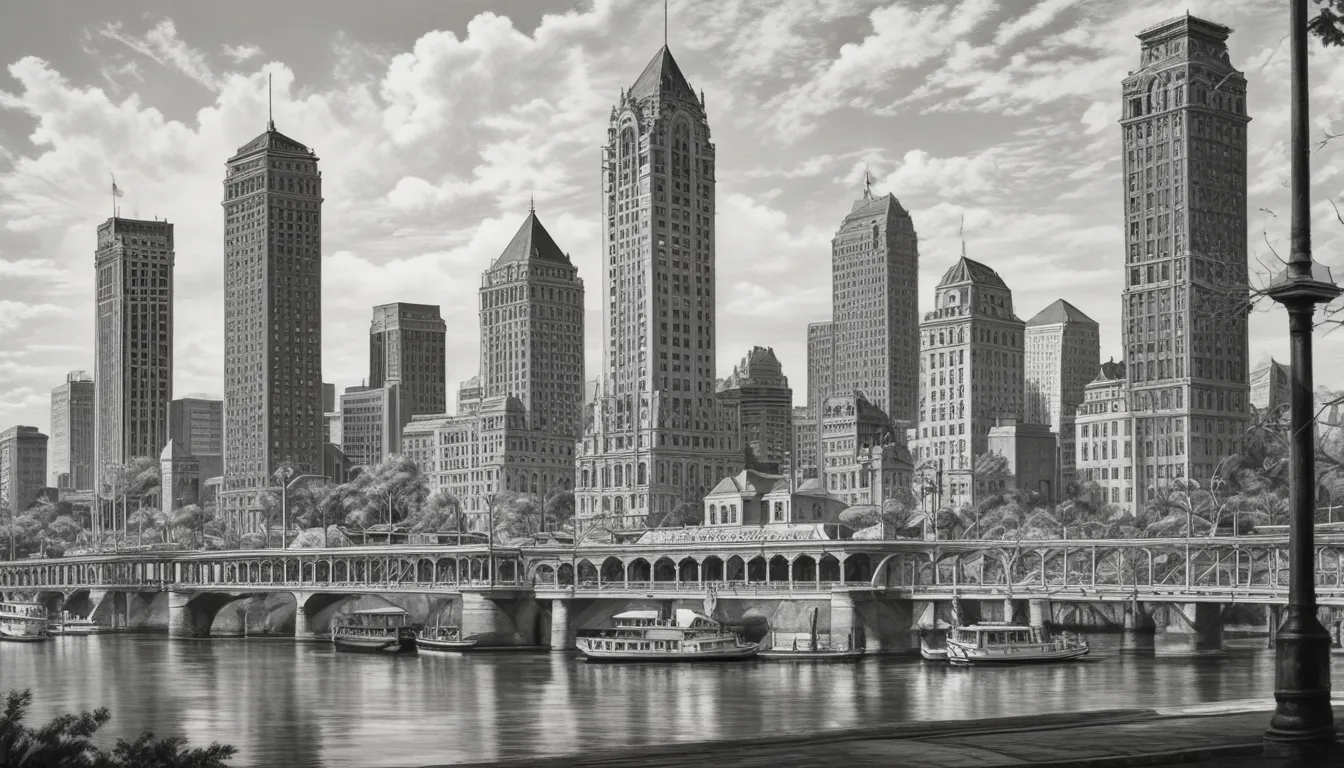The images in our articles are for illustrative purposes only and may not exactly match the content. They are intended to capture your interest and complement the text, not to replace it.
Welcome to Jacksonville, Florida, a city brimming with history and adorned with architectural marvels that beckon exploration and appreciation. From the towering Bank of America Tower to the historic Florida Theatre, each architectural landmark in Jacksonville tells a story that intertwines the city’s past, present, and future. Join us on a journey as we unravel 10 captivating facts about these iconic structures, shedding light on their significance and the enduring impact they have on Jacksonville’s cultural landscape.
Unveiling Jacksonville’s Architectural Treasures
Jacksonville, Florida, boasts a remarkable collection of architectural landmarks that showcase the city’s rich history and cultural diversity. From the grandeur of the Cummer Museum of Art & Gardens to the modern elegance of the Main Street Bridge, these iconic structures offer a captivating blend of history, culture, and natural beauty for residents and visitors to explore and appreciate.
Standing Tall: The Bank of America Tower
Dominating the Jacksonville skyline at a staggering height of 617 feet, the Bank of America Tower is a beacon of modern design and architectural prowess. Its sleek silhouette and commanding presence make it a standout feature of the city’s skyline, earning it the title of the tallest building in Jacksonville.
A Historic Gem: The Prime F. Osborn III Convention Center
Originally built in 1919 as a train station, the Prime F. Osborn III Convention Center is a remarkable example of Beaux-Arts architecture. Its grandeur and historical significance have transformed it into a sought-after venue for events, trade shows, and conventions. The center’s adaptive reuse from a train station to a modern event space adds to its allure as a noteworthy architectural landmark in Jacksonville.
Where Art Meets Architecture: The Jacksonville Main Library
Designed by the renowned architect Robert A.M. Stern, the Jacksonville Main Library is a striking fusion of modern and classical architectural elements. Its grand facade and innovative design have made it a beloved architectural jewel in the city, symbolizing a commitment to literacy and education. The library’s inviting atmosphere further cements its status as a cultural icon in Jacksonville.
Timeless Elegance: The Florida Theatre
Steeped in history and architectural splendor, the Florida Theatre stands as a stunning example of Mediterranean Revival architecture. Built in 1927, its opulent interior and iconic marquee have made it a cherished cultural and architectural landmark in Jacksonville. The theatre’s rich history and ongoing role as a premier entertainment venue solidify its place as a beloved architectural gem in the city.
Reimagined Beauty: The Karpeles Manuscript Library Museum
Nestled in the historic Springfield neighborhood, the Karpeles Manuscript Library Museum is housed in a beautifully restored church building. Its unique architectural features and historical significance as a former place of worship make it a captivating landmark in Jacksonville. The museum’s transformation into a repository for rare manuscripts adds an intriguing layer to its architectural allure.
An Icon of Resilience: The Treaty Oak
With roots dating back over 250 years, the Treaty Oak stands as a symbol of peace and endurance in Jacksonville’s history. Its majestic presence and storied past have made it a treasured natural and cultural landmark in the city. The tree’s significance as a symbol of resilience continues to captivate both locals and visitors, embodying the spirit of Jacksonville’s rich heritage.
Celebrating Diversity: The Ritz Theatre and Museum
Originally constructed in 1929, the Ritz Theatre and Museum is a significant architectural and cultural landmark in Jacksonville. Its Art Deco style and role as a hub for African American arts and heritage make it a pivotal part of the city’s cultural fabric. The theatre’s dedication to preserving and showcasing African American history further enhances its importance as an architectural landmark.
Echoes of the Past: The Kingsley Plantation
Located on Fort George Island, the Kingsley Plantation offers a glimpse into Florida’s plantation era through its well-preserved structures and scenic surroundings. The plantation’s historical buildings serve as a poignant reminder of the region’s complex history, adding depth to its significance as an architectural and historical landmark in Jacksonville.
Where Art Flourishes: The Cummer Museum of Art & Gardens
Situated along the picturesque St. Johns River, the Cummer Museum of Art & Gardens is a harmonious blend of art and nature. Its historic buildings and expansive gardens create a mesmerizing backdrop for a diverse collection of art, making it a captivating architectural and cultural landmark in Jacksonville. The museum’s commitment to art education and community engagement further enriches its reputation as a cherished institution.
Embracing Nature’s Beauty: The St. Johns River
Flowing through Jacksonville, the St. Johns River is a natural landmark that offers breathtaking views and a plethora of recreational opportunities. Its role as a vital waterway and scenic backdrop for the city’s skyline elevates it to an essential natural and cultural landmark in Jacksonville. The river’s enduring beauty and significance in the community make it a beloved feature of the cityscape.
Conclusion: A Tapestry of Timeless Beauty
In conclusion, Jacksonville, Florida, is a city adorned with architectural gems that embody its rich history, cultural diversity, and natural beauty. Each landmark weaves a unique tale that contributes to the vibrant tapestry of Jacksonville, inviting residents and visitors to immerse themselves in the city’s past and present. Whether you’re a history buff, an architecture enthusiast, or a curious traveler, exploring these landmarks offers a captivating journey through Jacksonville’s unique identity and enduring legacy.
Frequently Asked Questions
-
What is the significance of architectural landmarks in Jacksonville, Florida?
Architectural landmarks in Jacksonville, Florida, hold immense cultural and historical significance, serving as touchstones for the city’s evolution and identity. -
Are these architectural landmarks open to the public for visits?
Many of the architectural landmarks in Jacksonville, Florida, are open to the public, allowing visitors to explore and appreciate their architectural and historical value. Before planning a visit, it’s advisable to check specific visiting hours and any entry requirements for each landmark.
Your Feedback Matters
Our commitment to delivering trustworthy and engaging content is at the core of our mission. Every fact shared on our platform is contributed by real users like you, ensuring a wealth of diverse insights and information. As you explore and learn with us, trust in our dedication to quality and authenticity as we continue to uncover the fascinating stories behind the world’s most captivating landmarks. Thank you for being a vital part of our community.






